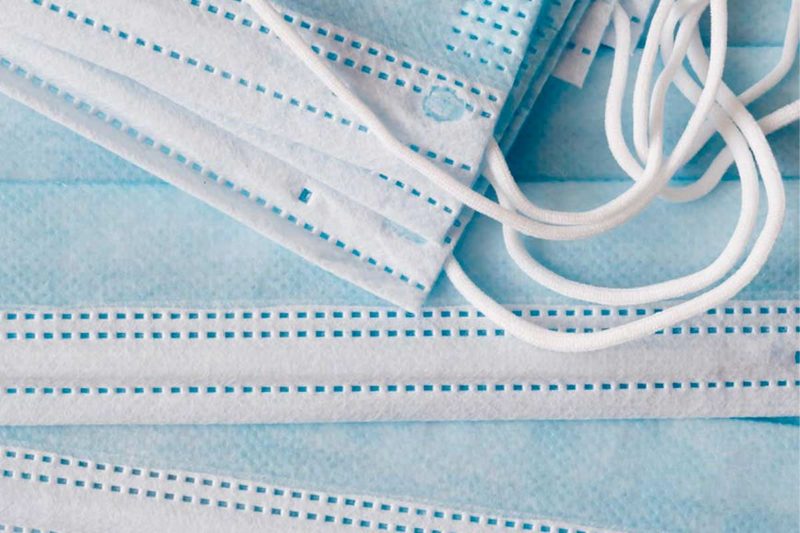Waste reduction and the “zero waste” trend are what everyone talks about as soon as ecology is mentioned. But more often than not we think about household kitchen waste more than other commonplace waste items that can easily be reduced… Or even eliminated! Here we take a deep dive into the five waste items to eliminate.
1- Single-use face masks
Face mask mandates have caused the production, use and subsequent disposal of these surgical masks to rocket. Usually worn only by healthcare practitioners, these masks are made from synthetic fibres: polypropylene, which is basically plastic. And if you add surgical gloves, the pandemic and the disposable PPE that came with it to the mix, all of this has significantly exacerbated plastic pollution of the sea. The setup of face mask recycling schemes is now starting to be considered. However, they come up against the difficulty of collecting the masks, on one hand, and also the need to separate the metal threads inside from the mask itself. It’s also possible to grind the whole thing down, but that calls for heavy-duty industrial processes for what are small volumes. We’ve got to start from zero here!
Solution: Washable fabric masks, of course! The French body in charge of standards [Association française de normalisation – Afnor] states that category 1 fabric masks filter out the offending particles as effectively as surgical masks. Don’t think twice about it – go for the re-useable variety.
2- Sanitary protection items
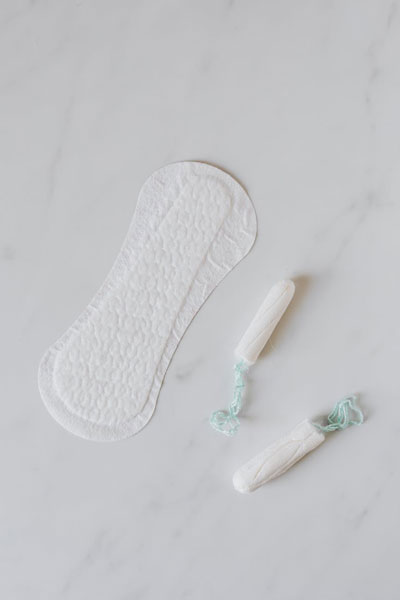
‘Sanpro’ like feminine hygiene items, wipes and nappies are said to account for 13% of residual household waste. Unfortunately, sanitary towels, panty liners and tampons are not biodegradable. Yet they account for a tremendous amount of waste that goes to landfill or gets incinerated. This generates pollution of the soil and air, on top of the environmental impact of their production. Let alone their individual packaging, applicators and so on…. The production of disposable feminine hygiene items, made mainly of cotton and plastic, also requires a lot of resources. In addition, they contain a great many chemicals (mainly chlorine). As well as being harmful to the planet, they are harmful to the human body.
Solution: There are a great many sustainable, zero waste alternatives: menstrual cups, washable fabric sanitary towels and period underwear. The latter has the dual merit of being really user-friendly and also eco-friendly.
3- Bin bags
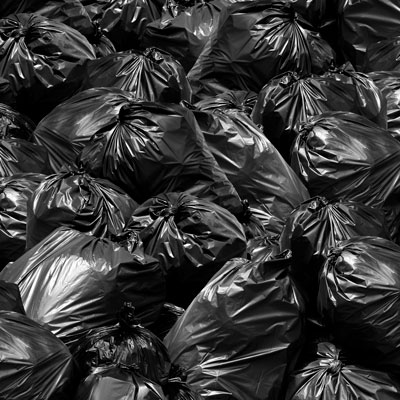
These bags, made partly from plastic, are yet more waste items that add to our waste! Because the dustcart takes household waste to the refuse depot, after which it gets incinerated or sent to landfill, bin bag and all. You can opt for recycled plastic bin bags, but that does not solve the problem of their disposal. Otherwise, bin bags labelled as biodegradable and/or compostable are a popular choice right now. But there’s a problem: if the composting conditions are not right, plant-based plastic will not break down. Most of these bin bags are made from polyethylene (plastic), as well as maize or potato starch to allow them to fall apart and disintegrate. While the plant-based part is biodegradable, the plastic bits remain. When you think about how bin bags end up in the ground or give off toxic fumes when they are burned, you realise what a ridiculous thing they are.
Solution: Why not just drop standard big bags in favour of paper ones? Over time, as you sort and reduce your waste, the contents of the kitchen bin will easily fit in a Kraft paper bag. You just need to line the bottom with a paper bag like those from the greengrocer, and put your rubbish out a little more frequently.
4- Beauty products
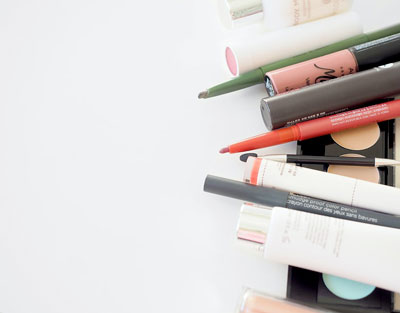
While in the kitchen, food packaging often gets sorted into different bins and recycled, it’s seldom the case for the contents of the bathroom bin. Because in there, empty plastic shampoo bottles mingle with toothpaste tubes and dirty cotton wool balls that seldom get sorted. Yet some of those containers are perfectly recyclable, like glass skincare product bottles and jars, their plastic lids and cardboard outer packaging boxes. Then there are creams tubes, lipsticks and make-up in general, nail varnishes and stick deodorants as well as pump systems from bodycare products, for example, which should be taken apart.
Here in France, Terracycle and Citéo, which specialise in special recycling schemes, offer collection solutions in partnership with brands. The latter go to great lengths to enable consumers to return their containers, too. All of that is yet to go mainstream, as is the upstream commitment to designing packaging that’s easily recycled, to using recycled materials and to including sorting information on product packaging.
Solution: Favour eco-designed beauty products and plastic-free packaging. Consider using solid formats, too. Favour soap over shower gel, solid shampoo and toothpaste, refillable make-up formats and washable wipes. There are even solidified oil cleanser pucks, solid deodorants and body butter in bar form that melt onto the skin. With all that and re-usable cotton bud substitutes, there’s no longer any need to have a bathroom bin.
5- Sponges
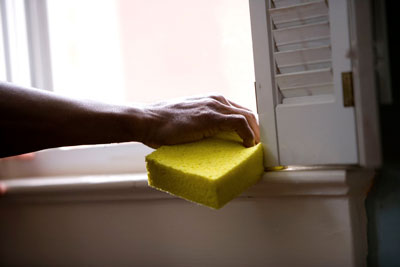
Sponges get so overlooked as a household waste item! We don’t consider them very important, yet sponges are an ecological catastrophe, from production to their use and end-of-life phase. Sponges are generally disposable, synthetic, made from resin foam, chemically treated and coated in polyurethane. This strong type of glue is used to bond the sponge side to the scouring pad side. The latter is made from nylon and polyester, which are also plastic fibres derived from petrochemicals. Let alone the chemical dyes in the blue and pink varieties. As the sponge is used, it sheds thousands of microplastic fragments soaked in these toxic substances into the washing-up water. They go into the waste water, and ultimately into the soil. Lastly, when the sponge ends up in the bin, it’s impossible to recycle. Plant-based sponges, which are very widely used since they are supposed to be more eco-friendly, are a worthwhile solution. However, they contain the same glue for the abrasive side and often just as many – or even more – chemicals to make them more hardwearing. Lastly, as for natural sponges, they are biodegradable but of animal origin. Because they are the “skeletons” of marine organisms harvested from the sea.
Solution: You can start off by getting yourself some more sustainable cleaning aids like wooden-handled washing-up brushes or coconut fibre brushes. We hear a lot about tawashi sponges out of Japan, which you can make yourself by weaving together strips of cotton from an old T-shirt, for example. Although perfect for cleaning windows, they are sometimes not abrasive enough for washing-up. In that case you can gravitate towards washable sponges. Made from Hessian cloth for example, they can just be laundered to get rid of any bacteria and then re-used.
The fight against waste will be won with changes to habits which bring about changes at an industrial level when brands follow demand. It’s up to you to make these choices and take action, on the reduction of your own household waste, or at least the recycling thereof. Make informed choices as a consumer to go for the most sustainable, biodegradable products possible!


